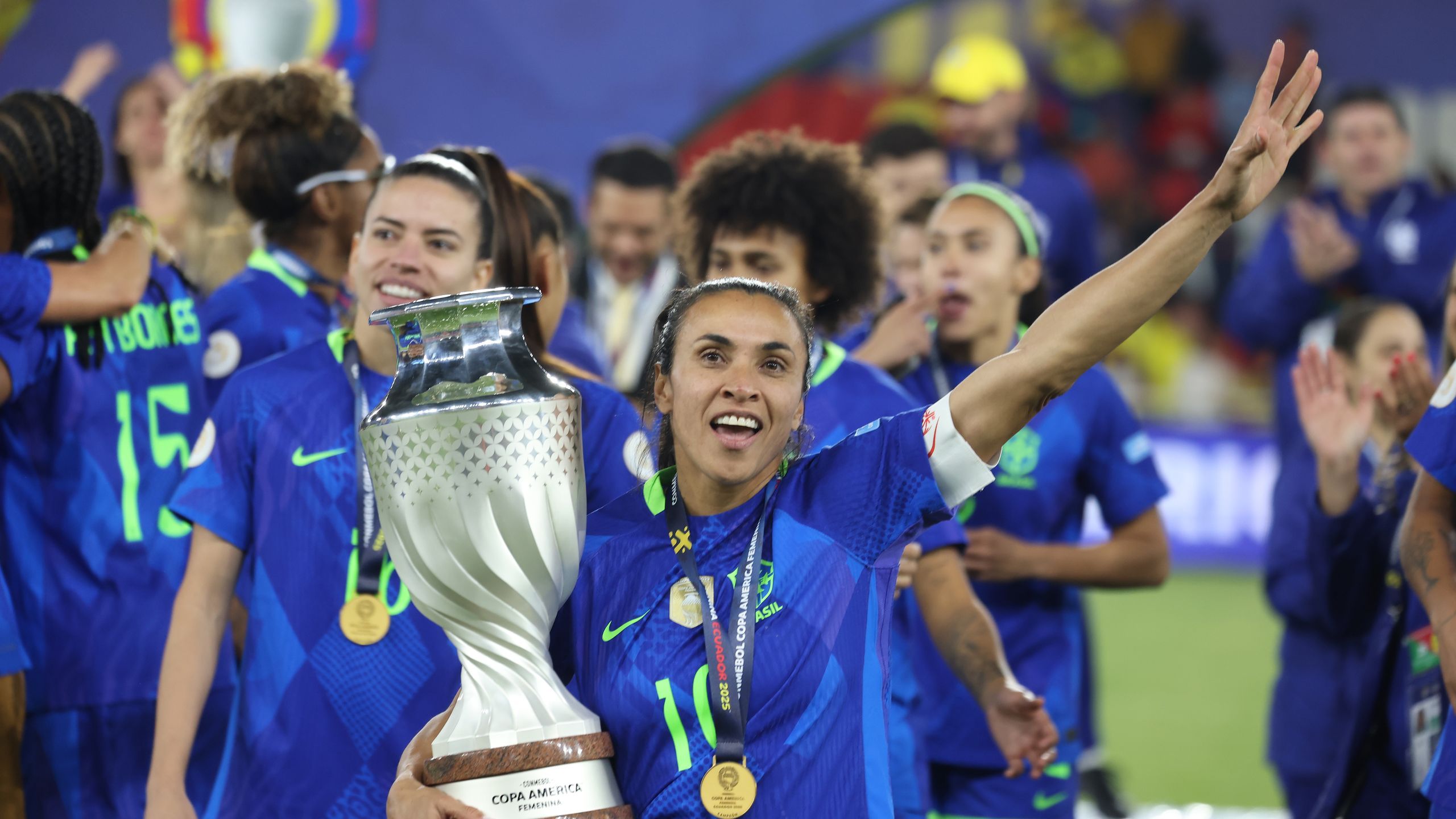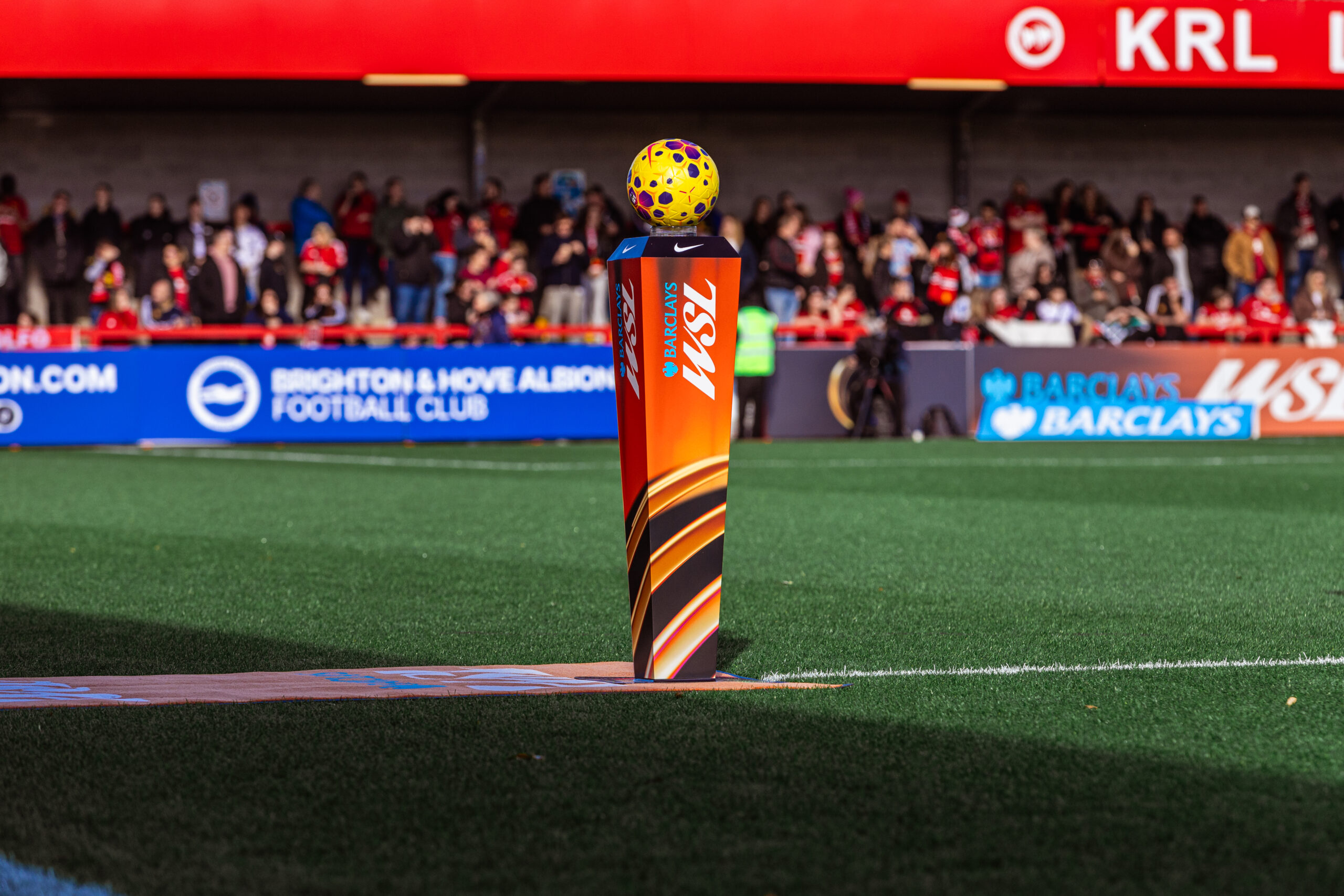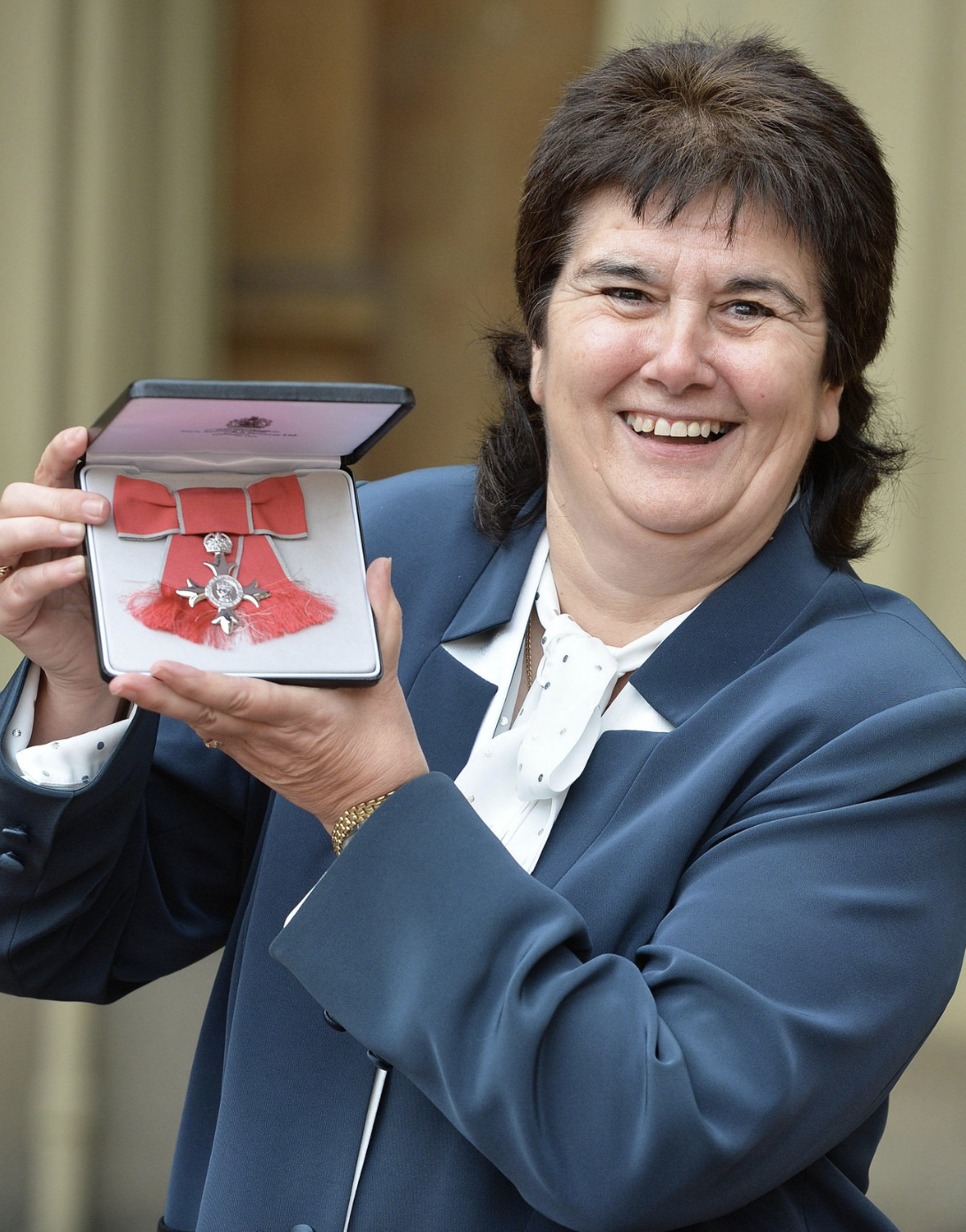As a summer of women’s football comes to an end, fans and critics can reflect on the three major continental tournaments that filled screens and captured hearts: the UEFA European Women’s Championship (Euros), the Copa América Femenina, and the Women’s African Cup of Nations (WAFCON). Each tournament faced challenges and celebrated triumphs – but what did we learn about each of these regions and the growth of women’s football as a whole?
Background & Structure
All three tournaments have lengthy and illustrious histories (relative to the timeline of women’s football) that reveal a common theme: powerhouses. Germany have won 8 titles in Europe, Nigeria just won their 10th title in Africa, and Brazil similarly just won their 9th in South America. But, although these strong teams have stayed at the top of the game, each continent has grown more and more competitive with time, Europe developing more quickly than its counterparts. This is somewhat unique to the women’s game, because although the men’s game has historically strong teams, it does not have the same level of disparity.
Another factor within these tournaments is that both the WAFCON and Copa América each act as World Cup Qualifiers, with African semi-finalists and South America’s top 3 all booking their tickets to the tournament. The winner of Copa América also goes to the Olympics based on this competition. This adds another level of pressure to competing nations, which can be an issue in the typically unstable footballing environments prevailing in these continents.
Interestingly, while the Euros occur every 4 years, WAFCON and Copa América were each restructured to be played biennially, the federations citing increased competition and viewership as reasoning. This could be seen as flawed, as the resources never seem to be allocated correctly. The tournaments also have different numbers of competing nations, with 16 in Europe, 10 in South America, and 12 in Africa. The men’s editions of these same tournaments had 24, 16, and 24, respectively. While the argument can be made for limited nations increasing difficulty and quality, it begs the question: how can nations improve when not given the opportunity?
Growth is near impossible without investment, and investment is difficult to justify without results. It’s a never-ending tale as women’s football continues its rise – but it’s time for the world to see the massive value and opportunities (both existing and potential) in women’s football not just in traditionally strong countries, but all over the map. The double standard between men’s and women’s football is glaringly apparent. Women, in both a sporting capacity and in every conceivable manner, are forced to prove themselves and earn respect and investment, two things men are automatically given.
Attendance
The Euros saw the highest attended tournament yet, with 657,291 fans attending matches in Switzerland, surpassing the still impressive 574,875 that showed out in England in 2022. Of course, this is huge considering the size of the hosting stadiums compared to the likes of Wembley and Old Trafford. Remarkably, 29 out of the tournament’s 31 matches were sold out.
WAFCON hosts Morocco drew capacity crowds to their own matches, but other games failed to draw big numbers. This competition, too, suffered from smaller stadiums as Rabat’s main stadium was still undergoing renovations, set to be ready for the men’s club world cup, which raises concerns over the inevitable sexism that played into this timeline. Most stadiums had capacities of 10 to 20 thousand, the final even being played in one with a limit of 21,000.
Copa América had the lowest attendance of the three; though there has been no official figure, it was clear to the naked eye that most stadiums were near empty. A Brazil match played in a stadium with 18,000 seats was reportedly attended by just “a few dozen fans”, according to Tico Times. The largest attendance was only 6,000 spectators for Ecuador’s debut. The tournament was played across 3 stadiums in the capital, Quito, compared to the 8 spread across Switzerland for the Euros, and the 5 spread across Morocco.
Unfortunately, the coinciding nature of these tournaments hindered both Copa América and the WAFCON. The much-deserved and fantastic global coverage of the Euros unfortunately restricted international media attention on the others. Even as the whole tournament was delayed by one year, the WAFCON schedule only came out at the end of May, leaving it challenging to promote and plan for.
These tournaments bring varying levels of hope and concern, with the Euros leading the charge, WAFCON with signs of improvement and international interest amid infrastructure issues, and Copa América leaving much to be desired and an obvious need for change.
On the Field
The Euros, WAFCON, and Copa América displayed fascinating showings on the field. From the intense focus on attacking shown in both Europe and South America, to the growing reliance on a strong defence in Africa, it seems as though the tables are turning.
WAFCON teams are beginning to show signs of collective team excellence rather than individual stars drawing all of the focus. Although Africa hosts many of the world’s very best goalscorers in the likes of Ghizlaine Chebbak, Asisat Oshoala, and Barbra Banda, the scorelines were far more even and measured than their continental counterparts. This is likely due to a few factors, including the introduction of more video performance analysis than ever before, a clear focus on defensive tactics, and a more level playing field.
Many “smaller” teams showed up during WAFCON, Ghana epitomising the sense of the tournament. Although the West African side has fewer big names than the likes of South Africa and the other semi-finalists, they held their own due to their incredibly solid work as a collective. Other teams, such as Mali with their impressive fluidity and midfield excellence, Democratic Republic of the Congo with their resilience and big results, and Algeria who are leading the pack along with Morocco in investment and infrastructure to support the women’s game, surprised fans with their abilities.
The Euros displayed an uncharacteristic lack of defensive solidity, with high scorelines and mistakes being the highlights. Very few games in the group stage were cagey, with the knockout matches delivering the more tactical and defensive side of the tournament. Goal scorers were put on a pedestal and have delivered incredible excitement and drama to our screens. This balance does bring into question how some of these traditionally strong European teams will match up against the likes of Japan or the USA.
The Euros were as competitive as expected, with such a rigorous qualification process. Teams such as Italy and Switzerland over performed, while the Netherlands disappointed in a tough group. Almost every single team that advanced past the group stage could have gone on to win the whole thing. There were few one-sided high-scoring games, every team putting up a fight. The amount of games that went into extra time and penalties in the knockout stages encapsulates the tense, competitive energy of the region.
Copa América played more along the lines of the Euros, with very high scorelines throughout. The final was the epitome of this, Brazil defeating Colombia on penalties after a 4-4 draw that was quite possibly one of the most entertaining games football has ever seen. The tournament suffered from sub-par refereeing, especially when juxtaposed with the performances of those in Switzerland. This was certainly a factor in the high frequency of red cards, with 7 players being sent off (only one more than the Euros, but in significantly fewer games).
The teams expected to thrive were the ones that did – Brazil, Colombia, and Argentina all performed well. The conditions were extremely poor in Ecuador, with CONMEBOL, South America’s football governing body, receiving plenty of backlash from players, journalists, and fans. Group stage matches were played back to back in the same stadiums, forcing players to warm up off the field to maintain the grass. Overall, it was unfortunately clear how players cannot perform to the best of their abilities while plagued with structural issues. This was not a fair tournament for the players.
Investment & Pay
WAFCON winners Super Falcons walked away with €853,000 (45% increase from 2022) in prize money, which is a far cry from the €6 million that Senegal received in the men’s edition in 2023. Each individual player was given the Naira equivalent of €86,615 and each member of the technical crew €43,309. They also each were allocated a three-bedroom apartment under the Nigerian government’s Renewed Hope Housing Scheme. While on the surface, this seems generous and impactful, one must question how these funds could have been used in women’s football initiatives. Although Nigeria are by far the most successful team on the continent, their federation often struggles with treating and compensating players fairly – this one-time gift could have been directed to set up the infrastructure for the Super Falcons to succeed with the federation’s support, instead of despite.
The Nigerian Federation could have followed in Morocco’s footsteps in investing, putting their money into facilities, staff, and stadiums. Morocco has the best facilities and attracts players, so this investment has paid off. If we see more of that all over Africa, this competition will level up even more. Morocco hosted the WAFCON in 2022 and will again in 2026, due to their quickly emerging status as the epicentre for women’s football in Africa, a role it seems that even the other powerhouses are not attempting to challenge in terms of infrastructure.
Over in Europe, each qualifying team received a fixed €1.8 million (156% increase from 2022), with large sums for winning matches along the way. The maximum amount a team could have received if they won the tournament and they won all of their group stage games was €5.1 million. In 2022, the total sum England received was just over €2 million, signifying great growth. Within this money to nations, players are guaranteed to be allocated a certain amount by their federation. This allocation is recommended to be 30%-40% of the funds , or 35%-40% if the nation reaches the knockout stages. The remainder is to be used on other national team expenses and/or funds and investments aiding in the development of women’s football in each country.
The Euros also has a club benefits programme, which was introduced to acknowledge the importance of club facilities and opportunities in a player’s development. This sum was €9 million, doubling the allocation from 2022. It is the largest club benefit programme in women’s football. If other confederations adopted this practice, it could seriously aid in the development of the game in each continent.
Brazil reportedly received €1.3 million in prize money. After the men’s edition of the tournament made history for huge funds given to participating and winning nations ($2 million for participating, $16 million for the winner), this is saddening. Compared to the other women’s tournaments, this seems more acceptable, but when put side-by-side with the badly organised tournament and lack of help from CONMEBOL, it makes a depressing amount of sense. There is little information available about any other prize money, but one would hope nations and players are fairly compensated.
Conclusion
The UEFA Women’s Euro made headlines with broken records, eye-catching performances, and smooth operations. The Women’s African Cup of Nations had similar in-game drama and showings, but was marred with questions surrounding finances and federations. Copa América Femenina followed in their footsteps with wonderful games, but unfortunately was overshadowed by the issues within CONMEBOL. The Euros established a benchmark that other regional tournaments should aim to reach. The skill and passion is there – all women’s football needs is support and backing.



